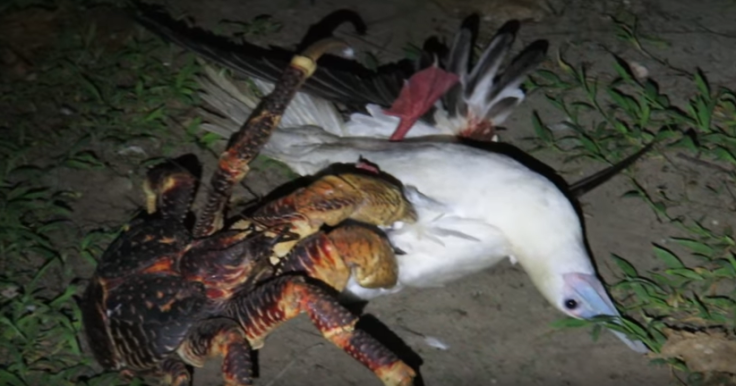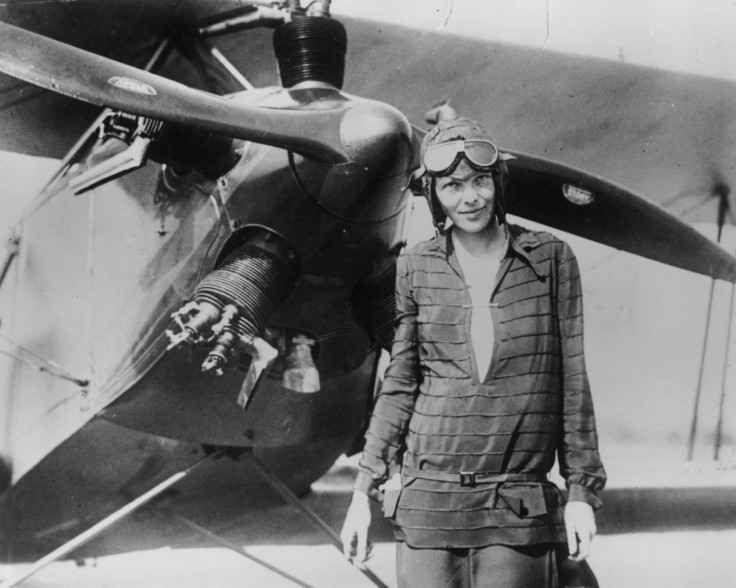Was Amelia Earhart dismembered by giant crabs the size of dogs on a Pacific island?
Coconut crabs could have disposed of Earhart's body in the Pacific island of Nikumaroro, according to theorists.

After videos and images emerged showing a fearsome crab stalking and killing a bird much larger than itself, theorists have begun to speculate that this could have been the fate of legendary US aviator Amelia Earhart who went missing in the middle of the Pacific Ocean in 1937.
Earlier this year, Earhart's story received renewed attention after a picture shot in 1937 reportedly showed her and her navigator Fred Noonan in the Marshall Islands. Some believe she might have been possibly attacked and eaten by giant crabs in the Pacific island of Nikumaroro.
Why is this theory interesting enough to swirl speculation? The facts so far:
- Earhart last flew toward Howland Islands and was reportedly unwell, but decided to make the journey anyway.
- If she had managed to make it to the island of Nikumaroro, she might have had to make a long and arduous swim to reach the shores.
- Giant crabs are known to have the necessary hardware to easily break bones – in comparison, imagine a human being able to pinch with six tonnes of force – and with the strongest recorded grip of any animal on Earth, they might not be easy to fight.
- Parts of a human skeleton were found on Nikumaroro island by a British colonial officer in 1940 that reportedly "matched the description of Earhart".
- Nikumaroro is infested with coconut crabs, named by Charles Darwin after he saw them crush coconuts with ease.
Earhart's disappearance and death have been the subject of mystery, intrigue and wild speculation for nearly a century now.
For those who are not familiar with it, Earhart was the first woman to fly solo across the Atlantic. She held several aviation records and was also a women's rights activist. Earhart went missing in 1937 while attempting to circumnavigate the globe with navigator Fred Noonan.
Starting in Miami, she took 21 days to reach Guinea and then carried on towards Howland Island in the Pacific. The last recorded communication from her twin-engined Lockheed Electra was on 2 July, 1937. It is believed that she crashed into the ocean off Howland Island.
The International Group for Historic Aircraft Recovery (TIGHAR) has dedicated decades of research into the Earhart story and, in 2014, they were able to identify a scrap of aluminium sheeting that is believed to have been part of her aircraft.
The aluminium sheet was recovered near Nikumaroro, 350 miles from Howland Island.
There is, however, no concrete evidence to support any of the theories presented and sceptics have always looked to the last transmission Earhart sent out which placed her in the middle of the ocean.
The US Library of Congress had also pointed out earlier that she had left behind important communication and navigation instruments before her takeoff and, considering the bad weather on the day, no one can say for sure where she crashed and if giant crabs were responsible for the disappearance of her corpse.

Coconut crabs, also called Birgus latro, are the largest land invertebrate, largest arthropod, and the largest known land crab on record. They can grow to a metre in length and can easily lift up to 30kg with their pincers.
Their diet mainly consists of fruits and coconuts, but they are omnivores meaning they will eat pretty much anything they set their sights on, including smaller crabs and dead relatives, but thanks to the now viral video, there is solid evidence that they do hunt and devour flesh in packs.





















